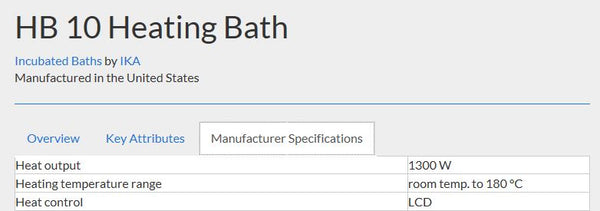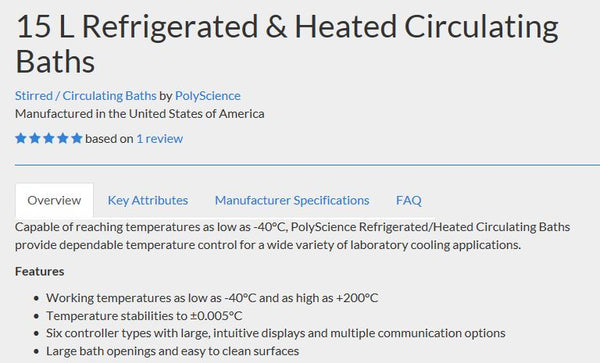There are certain situations in which a water bath is simply not appropriate, such as when you need to heat something above 100°C or cool something below 0°C. However, there are a couple of more specific scenarios in which the use of a water bath might be assumed appropriate but is actually not.
Two standout cases are:
- When dealing with temperatures close to the boiling point of water, just below 100°C.
- When dealing with temperatures close to the freezing point of water, just above 0°C.
In this post, we’ll look at these two scenarios in more detail, including what could go wrong and alternatives to using a water bath.
Setting Temperatures Close to the Boiling Point of Water
Many standard, heat-only laboratory water baths state an operational range with a low end of around 5 – 10°C above the ambient temperature and a high end of 99 – 100°C. Therefore, it may seem perfectly reasonable to use a setpoint of 99 or 100°C without a second thought. It’s in the specifications after all. However, there are a few potential issues when dealing with water baths at such high temperatures:
- The water could start to boil creating unwanted movement of the water bath liquid and disturbing or contaminating samples.
- Too much evaporation could result, lowering the liquid level within the bath. Left unchecked, this may mean that items are not fully bathed in the liquid. The reduced liquid level might even trigger the safety shut-off for the bath, switching it off altogether.
- Most standard, incubated baths rated to heat to 100°C will not heat to 100°C with the lid off. Both the Benchmark Scientific myBaths and the PolyScience Digital General Purpose baths have max temps at or near 100°C, but will only hold that temp with the lid on.
If you need to use a bath at temperatures near to 100°C, instead of using water in the standard bath, you can use oil or another high-temperature bath liquid. Alternatively, you can switch to a high temperature bath (often called an oil bath) that is designed specifically for dealing with higher temperatures.
For example, the bath below has a heating temperature range of room temperature to 180°C, and can be used with water or oil, as can all high-temperature baths.

Manufacturer specifications for the HB 10 Heating Bath.
Setting Temperatures Close to the Freezing Point of Water
As mentioned, many standard baths come with a temperature range specification that doesn’t cover anything below 5 - 10°C above ambient temperature. As such, for lower than ambient temperatures, you’ll need to use a refrigerated bath. These can be used with water as the bath liquid but only down to a certain temperature.
You might assume that it’s okay to use water at any temperature above 0°C, but the temperature of the water doesn’t need to be at 0°C for ice to start to form. As you near 0°C, you may start to see ice buildup on the walls of the bath. This can be detrimental for a couple of reasons:
- It reduces heat transfer from the surface of the bath, making it more difficult for the bath to maintain its set temperature and possibly resulting in further buildup of ice.
- If the machine has an integrated pump, it can become clogged with ice, rendering it inefficient or useless.
If you need to cool samples near or below 0°C, you’ll need to switch out the liquid you use. Mixtures of water with ethanol, ethylene glycol, or glycerol are common choices.
Applications Requiring a Large Temperature Range
In some cases, your application may require that you use a wide temperature range including sub-freezing and above-boiling temperatures. Many refrigerated baths are able to reach high as well as low temperatures, so you get the best of both worlds. It’s not uncommon to see baths with a range of -90°C – +200°C. The example below has an operating range of -40°C – +200°C.
A section of the overview for the 15 L Refrigerated & Heated Circulating Baths.
Plus, it’s possible to find liquids that will also cover a very broad range of temperatures, such as Julabo’s Bath fluid Thermal H10, which can be used for temperatures of -40°C – +180°C. This means you can utilize the bath at a wide range of temperatures without having to switch out the liquid. Other specialty bath liquids are available for different ranges of temperatures.

